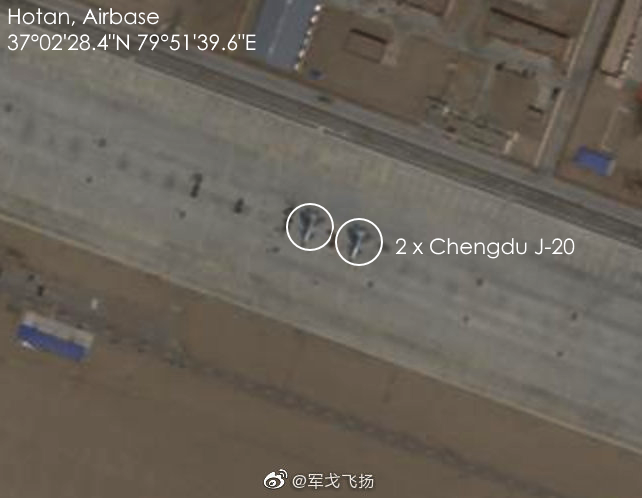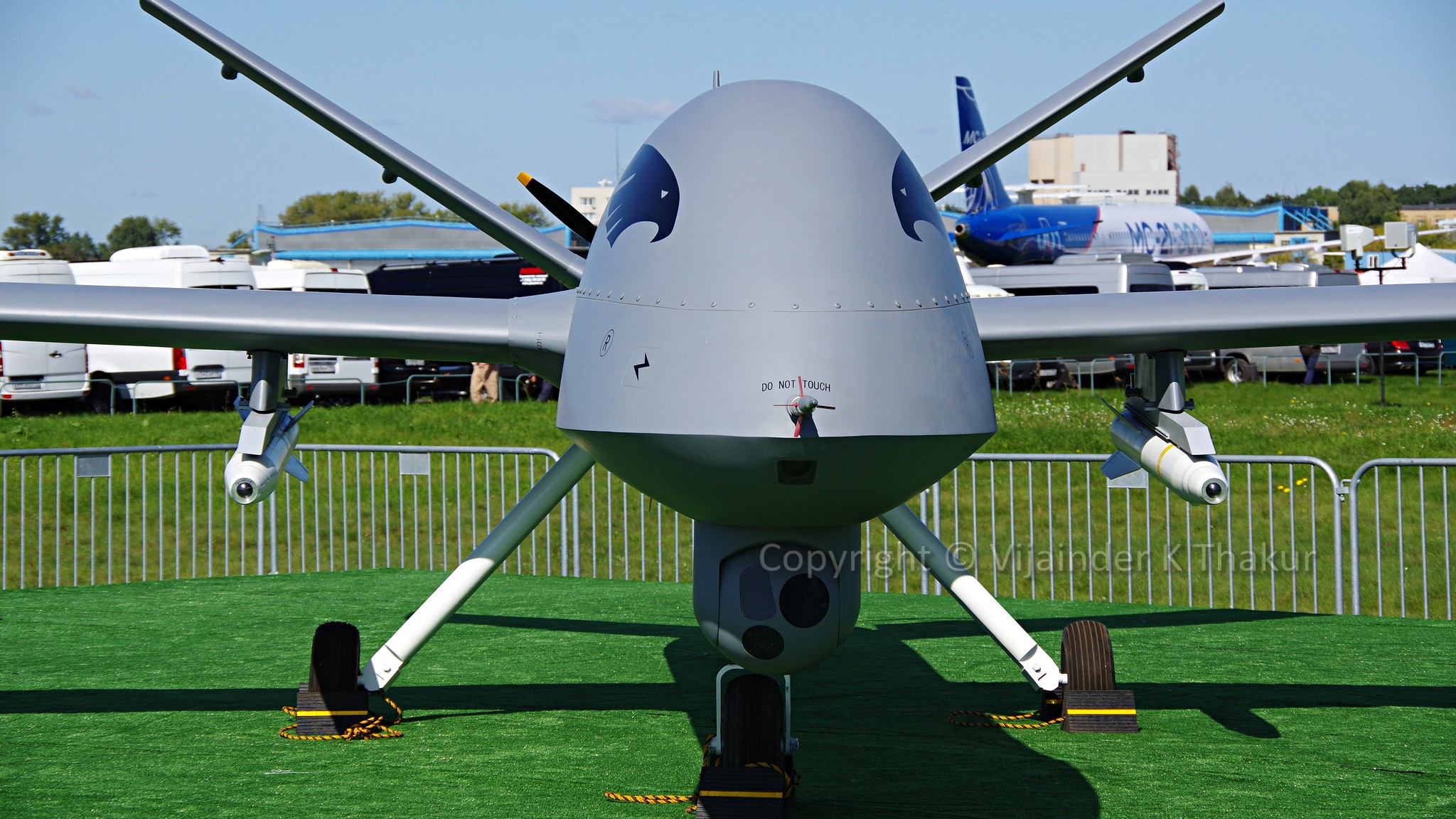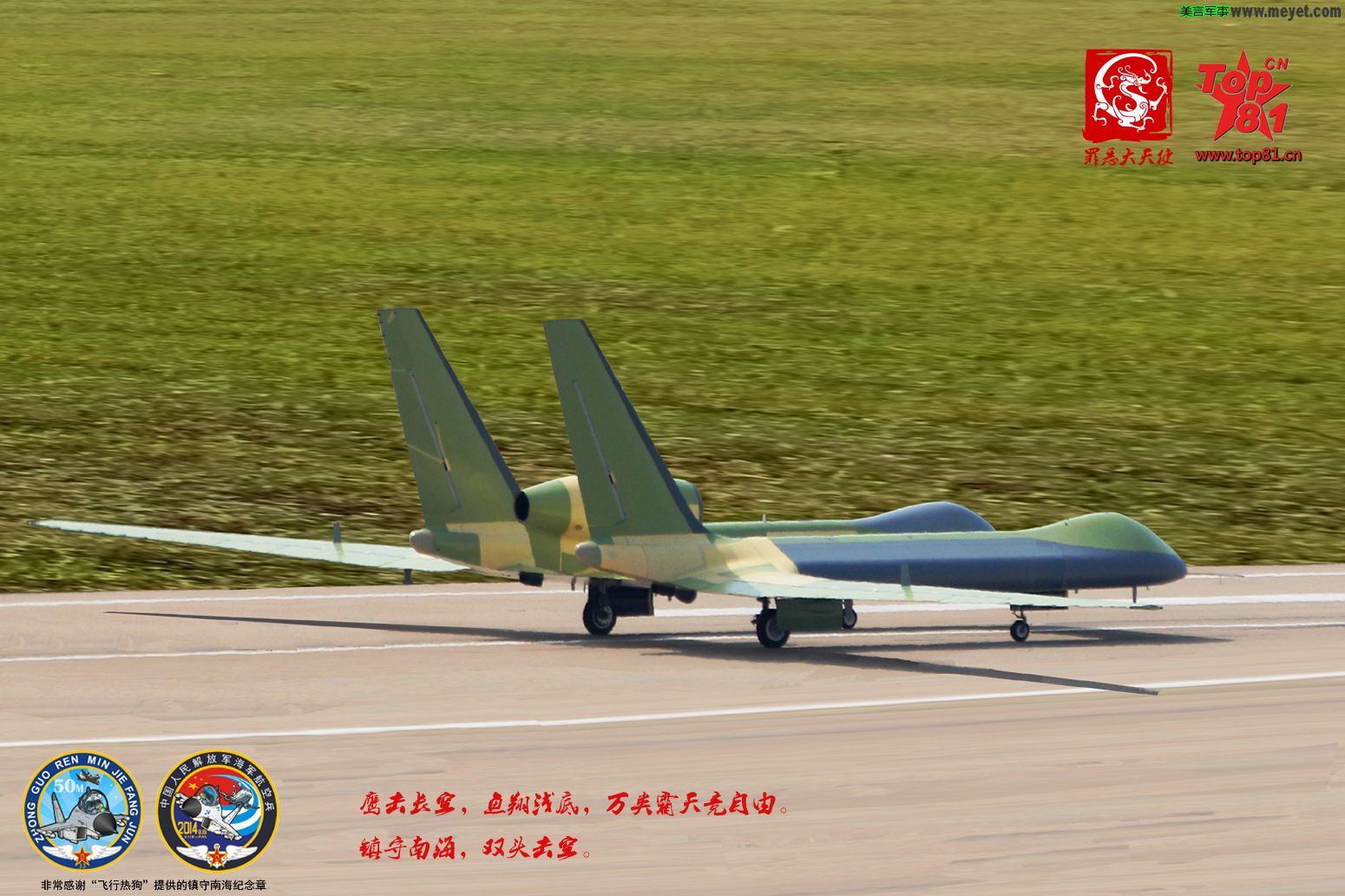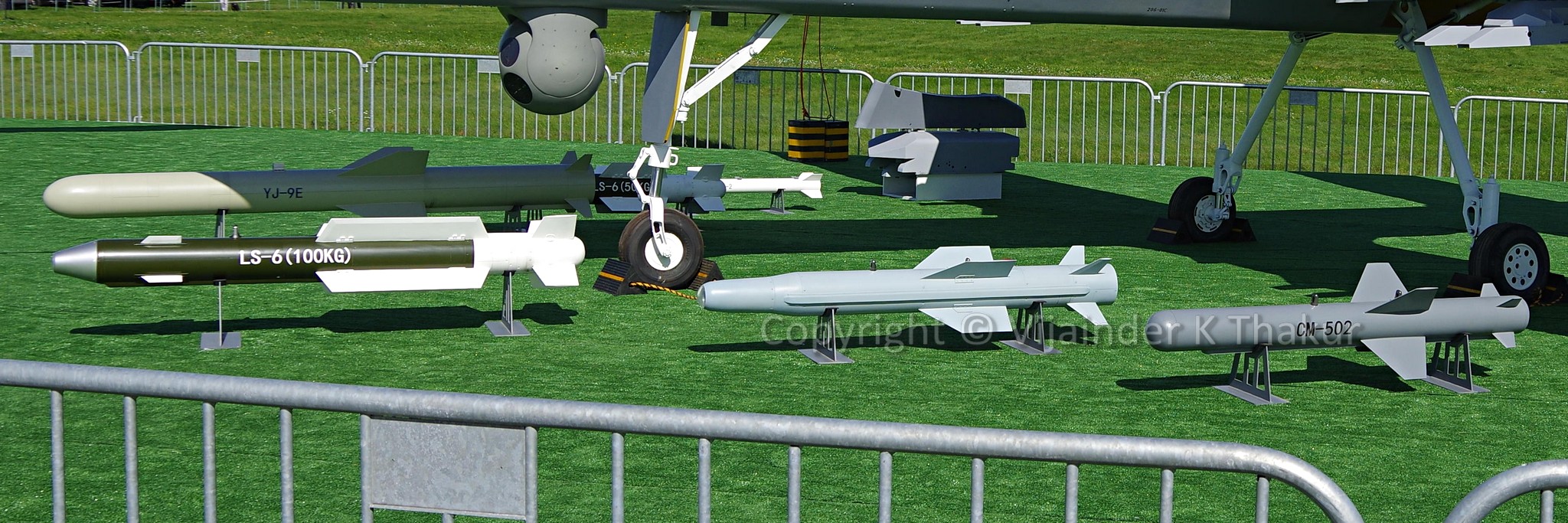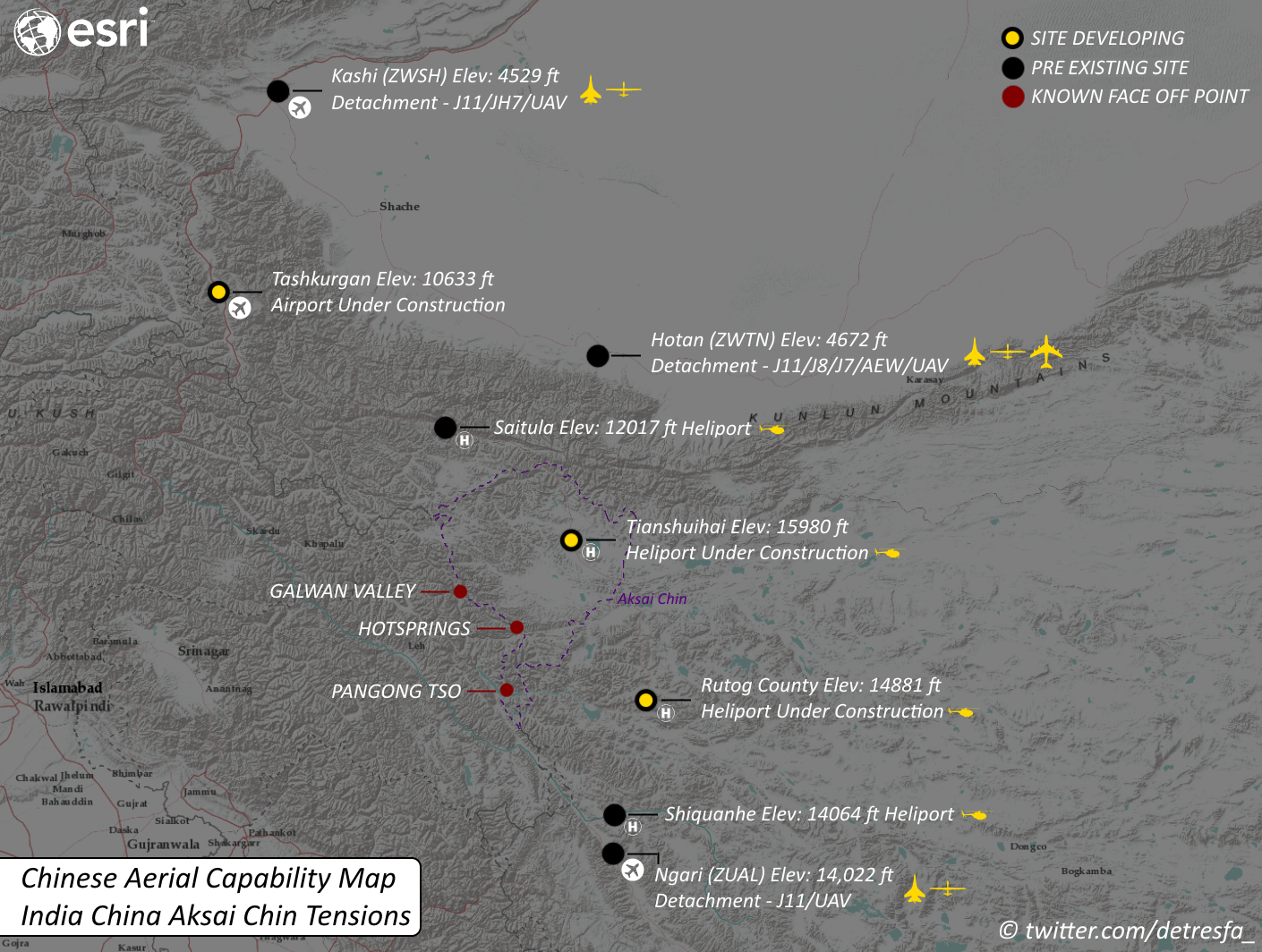Saturday, August 29, 2020
IAF vs PLAAF: Assessing the J-20 Threat
Saturday, August 8, 2020
IAF vs PLAAF - The PLA's UAV Threat
Introduction
PLA UAVs
The PLA has numerous types of
- Slow speed piston/turboprop powered reconnaissance and attack UAV's ranging from portable, small and MALE.
- High speed, turbojet/turbofan powered reconnaissance and attack MALE and HALE UAVs with varying degrees of stealth, ranging from front aspect stealth to flying wing all aspect stealth.
- Specialized UAVs equipped including
- A high altitude UAV featuring a AESA radar that can detect and track LO fighters
- An air launched low hypersonic speed drone to obtain targeting information for missiles
Most PLA MALE and HALE drones can operate beyond line of sight (LOS) and in the past, the PLAAF has demonstrated the ability of its armed MALE UAVs to carry out precision strikes at long ranges using satellite data links.
The number of Chinese institutions working on design and development of UAVs is impressive, their repertoire of UAVs even more impressive, and most impressive of all is the spectrum of precision strike weapons and supporting E/O targeting systems that China has developed for its armed UAVs. As we will see later in the text, the small size and weight of the air-to-ground missiles and bombs carried on the UAVs vouches for their precision strike capability. Most importantly perhaps, China has developed the PGMs keeping costs in mind. Chinese PGMs are much more affordable than their western counterparts they will be used extensively
In the past, the PLAAF has demonstrated the ability of its armed MALE UAVs to carry out precision strikes at long ranges using satellite data links.
Many of the UAVs developed by China represent work in progress. Some, like the air launched low hypersonic speed WZ-8 drone and the AESA equipped Divine Eagle HALE drone developed for tracking stealth fighters, are not relevant to the PLAAF vs IAF scenario. In the following paragraphs we will look at PLA UAVs that are most likely to confront Indian forces and the weapons that they are known to carry.
A comprehensive write up on PLA UAVs can be perused at this link on my paid access website IDP Sentinel
PLA UAVs
BZK-005
The BZK-005 is a MALE reconnaissance drone which is believed to be in service with units of the People’s Liberation Army Navy Air Force (PLANAF) as well as with a special group subordinate to the Joint Staff Department of the Central Military Commission. The drone is similar in appearance and capability to the Israeli Searcher drone in service with the IAF.
The BZK-005 features a satellite based data link allowing it to operate well beyond LoS.
The UAV reportedly has a speed of 150-180 kph, a service ceiling of 8,000 m and an endurance of 40-hr. It can carry a 50-kg payload.
A variant of the BZK-005 features a system mounted under the UAV's nose that could be electronic support measures (ESM), a radar, or a communication relay.
CH - 4 / Wing Loong - 1
The CH-4 is a MALE drone that appears uncannily similar to the General Atomics MQ-9 Reaper, with one visual difference being that the ventral fin below the V-tail on MQ-9 is absent on CH-4.
There are two variants. The CH-4A, a reconnaissance drone with 3500–5000 km range and 30- to 40-hour endurance, and the CH-4B, which bundles attack and reconnaissance capabilities with provisions for 6 weapons and a payload of up to 250 to 345 kg.
Specs
- Length: 9.05 m (29 ft 8 in)
- Wingspan: 14 m (45 ft 11 in)
- Height: 2.77 m (9 ft 1 in)
- Gross weight: 1,100 kg (2,425 lb)
- Powerplant: 1 × Rotax 914 turboprop, 75 kW (100 shp)
- Propellers: 3-bladed
Performance
- Maximum speed: 280 km/h (170 mph, 150 kn)
- Range: 4,000 km (2,500 mi, 2,200 nmi)
- Endurance: 20 hours
- Service ceiling: 5,000 m (16,000 ft)
The PLAAF designation for the armed variant CH-4B is GJ-1 (Gongji 1 or Attack 1). It features a chin mounted reconnaissance/targeting pod as well as hardpoints to carry weapons such as.
- BA-7 air-to-ground missile
- YZ-212 laser-guided bomb
- YZ-102A anti-personnel bomb
- LS-6 50-kG miniature guided bomb.
In May 2016, China demonstrated the CH-4s ability to strike targets with high precision using SATCOM data link and E/O target acquisition and targeting system.
The CH-4B UCAV has been exported to Pakistan, Egypt, Saudi Arabia, Algeria and Iraq
CH - 5 / Wing Loong - 2
The CH-5 is similar in design but larger than the Chengdu CH-4. The PLAAF designation for the armed variant of the CH-5 is GJ-2.
China claims Wing Loong - 2 is better than the American MQ-9 Reaper "because it surpasses the latter's flight duration and operational efficiency".
UAV has a wingspan: 21 m, max take-off weight: 3.3 ton, max suspension weight: 1 ton, Endurance: 40 hours, Max range: 6,500-km.
The CH-5 can carry between 16 and 24 air-to-surface missiles. An upgrade would extend its range to 10,000 km.
Standard payloads include an electro-optical turret that has infrared, laser rangefinder and designator capabilities as well as a separate synthetic aperture radar. Electronic intelligence, communications intelligence and electronic warfare payloads are also available
The CH-5 has been exported to Algeria, Bangladesh, Egypt, Kazakhstan, Nigeria, Pakistan, Saudi Arabia, Serbia, UAE, Uzbekistan
FL-1 MALE USAV
via Twitter
The FL-1 bears a strong physical resemblance to the 3,300 kg-class CH-5.
Both UAVs feature ventral EO/IR turret. The FL-1 appears visually distinct from the CH-5 because of its pronounced wing root fairings.
The UAV is powered by a rear-mounted heavy fuel engine of an undisclosed type with a dorsal intake. This engine drives a three-bladed pusher propeller, which enables the vehicle to cruise at speeds of up to 240 km/h at altitudes of 16,404–19,685 ft and attain an operating ceiling of 26,246 ft.
It's likely that the operational capability and endurance of the FL-1 exceed those of the CH-5.
GJ-11 Sharp Sword Stealth UCAV
The GJ-11 long-range stealth attack drone is designed to penetrate deep into contested airspace without being detected to strike strategic targets or ferret out targets and relay targeting information for air or ground launched missiles. The drone is likely armed with internally carried missiles and laser-guided bombs.
TB001 Armed Reconnaissance UAV
via Twitter
The operational status of the TB001 is not known.
The MALE class drone performed its maiden flight in March 20, 2020.
Known locally as the "Twin-tailed Scorpion," the TB001 reportedly has a maximum take-off weight (MTOW) of 2,800 kg, an overall wingspan of 20 m, a length of 10 m, and a height of 3.3 m.
TYW-1 Armed Reconnaissance UAV
Source: Via YOUUAV.com
The operational status of the UAV is not known. It is similar but slightly heavier than the BZK-005
The 9.85 m-long and 2.5 m-high TYW-1 reportedly has a maximum take-off weight of 1,500 kg compared with the 1,250 kg of the BZK-005.
According to Chinese media reports, the TYW-1 can carry a 370 kg payload, features four underwing pylons, has a ceiling of 7.5 km, an endurance of 40 hours, and can reach a top speed of 200 km/h.
The UAV is equipped with an electro-optical system that can reportedly read a license plate 50 km away from an altitude of 5,000 m. It also features both line-of-sight and satellite navigation and control systems.
Wing Loong - 10 / Wind Shadow / Cloud Shadow UAV
The Wing Loong 10 (Wind Shadow) is a single turbofan powered RF LO MALE/HALE UAV. An armed, export oriented variant of the Wind Shadow, referred to as Cloud Shadow, is powered by the WP-11C turbojet engine, instead of a turbofan.
Cloud Shadow is the first high-altitude, high-speed fixed-wing UAV available for export by China .
Wind Shadow is designed for long-range reconnaissance and strike missions. It's export variant was unveiled at the 11th Zhuhai Air Show on October 31, 2016.
The UAV has a line-of-sight link radius of 290-km, cruising altitude of 14,000m and a maximum speed of 620-kph.
A variety of air-to-ground missiles and glide bombs were exhibited at the static display, including armaments such as the Blue Arrow-7 and -21, YJ-9E and AG-300M.
The aircraft has a maximum payload of 400kg, a normal take-off weight of 3,000kg and endurance of six hours.
CH-92A
via Twitter
The CH-92A is a medium range tactical reconnaissance/attack drone with a command link effective up to 155 miles and an endurance exceeding eight hours. It can fly up to 16,400 feet (higher than certain short-range air defense systems can reach), and up to a maximum speed of 124 miles per hour.
A CH-92 battery can be deployed in the field in around an hour, and the drone’s tricycle landing gears allows it to take off from an unprepared field or highway. It can also be recovered by parachute if necessary.
The drone’s reported maximum payload of 165 pounds can encompass up to two FT-8 missiles as well as sensors carried in a turret under the nose including day/night thermal cameras (viewing range of 8-12 miles depending on time of day), laser rangefinder and targeting pod with a range of around 8 miles, and a Moving Target Indicator for tracking vehicle targets.
The CH-92 is reported to be capable of attacking moving targets using FT-8C and FT-18D air to surface laser guided missiles
The operational status of the UAV in the PLA is not known. The UAV was exported to Serbia.
Divine Eagle LO Radar Drone
UAV Weapons
Multiple Chinese companies have developed families of UCAV weapons including precision-guided land attack missiles, bombs, and air launched ATGMs.
The Wing Loong series are equipped with the LE380 sensor turret that can include a laser designator, enabling the aircraft to fire laser-guided munitions.
The Wing Loong - 2 can carry ASCMs such as the YJ-9E.
In the following text, we will focus on land attack weapon systems only. These can be classified as follows.
- LS series PGMs which are modular bomb upgrade kits for gravity bombs. The kit comprises a SALH guidance module and a gliding module.
- FT series PGMS which are modular bomb kits for gravity bombs comprising a INS/GPS guidance module and gliding module.
- YZ series anti personnel cluster bombs
- AKD, AR series ATGMs
The following is an incomplete list of weapons that can be carried by PLA armed drones.
AKD-10
The AKD-10 is an air launched version of the AFT-10 ground launched surface-to-surface anti-tank missile. The 50 kg (110 lb) missile uses MMW plus IIR seeker.
AR-1
The AR-1 is a 45 kg-class short range SAL anti-armour missile. A CH-5 can carry up to 8 AR-1 missiles mounted on its centreboard and outboard pylons
AR-2
The AR-2 is a short-range semi-active laser (SAL) air-to-surface missile for use in anti-terrorism operations and low-intensity conflicts.
The AR-2 missile is reportedly a lighter and less capable variant of the AR-1, but it's more cost effective and can, therefore, be expended more readily, saving the heavier missile for higher value targets.
The missile is compatible with the CH-4 and CH-5 drones.
The AR-2 can also be carried by other unmanned combat aircraft and Chinese attack helicopters after minor technical modifications..
Weighing about 20 kg and carrying a 5 kg warhead, the AR-2 has a maximum range of 8 km and a top speed of 735 km/h, the missile's designers told China Daily.
The AR-2 is reportedly effective against personnel, armored cars, houses, and bunkers.
YZ-212
Laser-guided anti-personnel cluster bomb
YZ-102
A anti-personnel cluster bomb
CM-502
CM-502 missile (right extreme) at MAKS-2019
The CM-50X missile family is being developed and produced by China Aerospace Science & Industry Corporation (CASIC) of China.
The precision strike missile has a 10km-40km range and is compatible with multiple launch platforms. The missile features a modular architecture facilitating use of different guidance systems and warheads. Typically, the missile features a TV/IR seeker and HE fuze-warhead.
LS-6
The LS-6 is a 50-kg Laser guided precision bombs
TL-2
Tianlei-2 (TL-2) is an air-to-surface missile.
Blue Arrow-7 (BA-7, LJ-7)
Is a 47 kg (104 lb) air-to-surface missile with a tandem HEAT warhead that can penetrate 1,400 mm (55 in). It has semi-active laser guidance, and an effective range of 2 kilometres (1.2 miles) to 8 km (5.0 mi).
FT-8C
The FT-8C is a 44-lb laser-guided missile with a range of up to 5.5 miles.
FT-9
50-kg INS/GPS guided bomb
FT-10
25-kg INS/GPS guided bomb
FT-18D
17.6-lb bomb with a range of 3 miles.
Conclusion
Indian CAS Opertions
GPS/GSM Jamming
Options for Countering PLA UAV Threat
- Deployment of GPS/GSM jammers on Searcher and Heron drones
- Deployment of RF signal jammers with field units to disrupt the use of cluster bombs
- Deployment of ground based and airborne jammers to disrupt data links

